Among the best plants for plant beginners are the Sansevieria plants, which are commonly called the Snake Plant. These hardy and tolerant plants grow and develop without a lot of attention or care. But, can a snake plant grow outside?
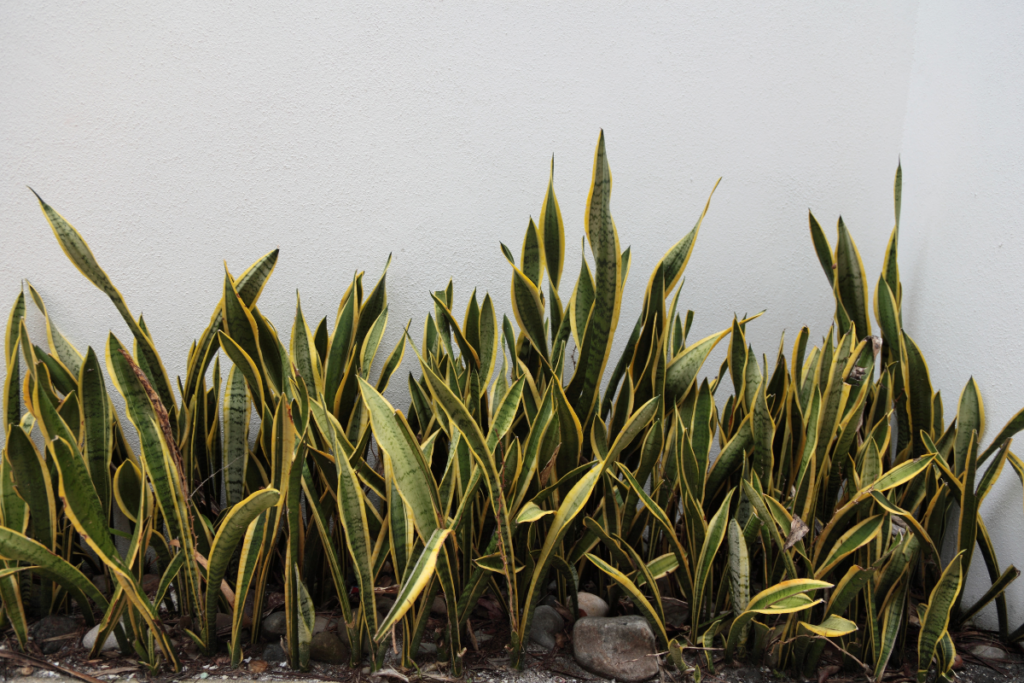
If ever you wonder if you will be able to plant snake plants outside, remember that it highly depends on your location or where you are residing.
We’ve done some research on highly commendable tips to cultivate snake plants. We will also provide you with the solution in this post.
It is possible to grow snake plants outdoors. Either in containers, pots, or in the ground, they can be raised. However, the snake plants require higher temperatures to survive.
As a result, your snake plants might not grow outdoors without particular care if you live in a location with an average yearly temperature below 55 degrees Fahrenheit.
Continue on reading this article to learn more about crucial factors that affect a snake plant’s development when it is planted outside.
How Do You Grow Snake Plants Outside?
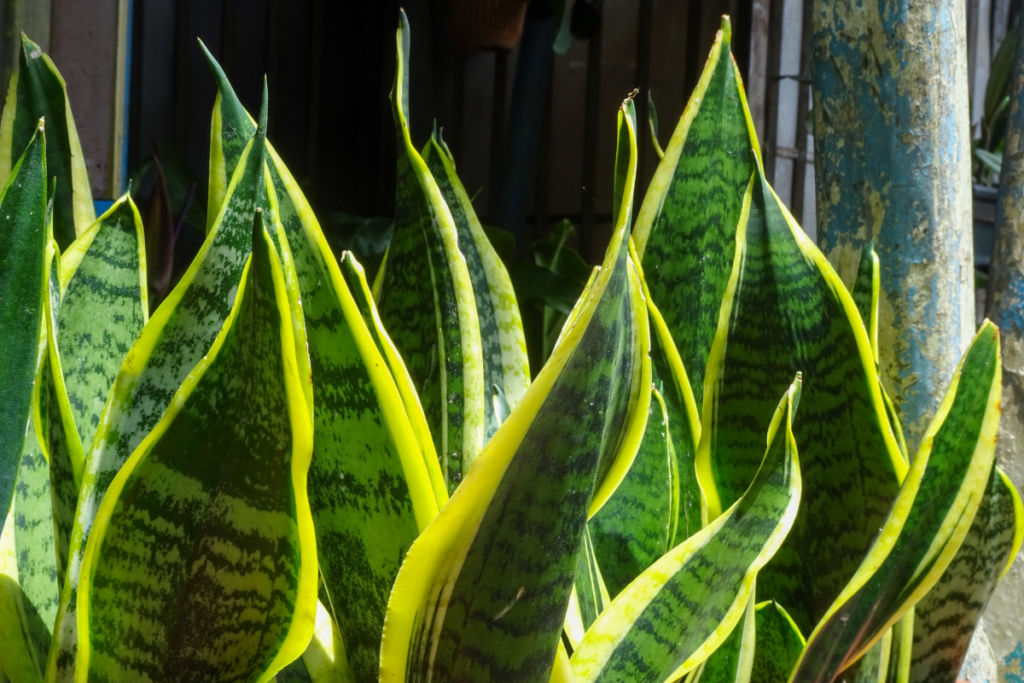
Snake plants tolerate a wide range of environmental conditions and are famous for being almost indestructible. The hardest problem is often figuring out how little the amount of water the snake plants require to thrive healthily.
There are some additional considerations to do in growing Snake Plants outdoors. Let’s delve into the most significant details to keep in mind.
1. Temperature
Snake plants live and are native to West Africa, hence they are tropical plant organisms. As a result, they thrive in warm climates (USDA Zones 8 through 11), where the temperature ranges from 55 up to 90 degrees Fahrenheit.
However, due to their extreme sensitivity to cold, they cannot endure cold temperatures below 50 degrees Fahrenheit that last for a few days.
2. Light
It’s possible that snake plants can adapt well to variations in lighting. They can be found in both brightly-lighted outdoor spaces and poorly-lit, shaded regions.
They can be placed outside: in your garden, on patios, and picnic tables, but bright, indirect lighting is best for them.
Since prolonged direct light exposure might dry these plants out, keeping them away is preferable. Additionally, it is mostly advised to avoid areas with low lighting because it may cause the Snake plant’s foliage to droop and eventually die and fall off.
If ever you wish to cultivate your Sansevieria plant outdoors, pick a location that faces west or south so that it will receive daily direct and indirect light.
3. Water
Snake plants don’t require plenty of water for survival, as was already mentioned. They really don’t need much at all. The snake plants should be given water when the soil is extremely and completely dry.
The size of your plant, as well as the level of humidity outside, will help you determine this. Roughly 2 and 6 weeks are enough time for these snake plants to live without water.
Make sure your Sansevieria plant is situated far from other garden plants that require more regular watering if you’re growing it in the soil outside, or in a pot with other tropical plants, or solely by itself.
Examining the leaves is the easiest way to tell if your Sansevieria plant is extremely dry. It’s probably time to water the plant if you see that the leaves are beginning to yellow or look wilted, especially at the tips.
4. Soil
Snake plants can be cultivated outside using just regular soil, provided that you make sure it has excellent drainage. Use porcelain, ceramic, and terracotta pots for relocating your snake plants outside.
However, make sure there is enough number of drainage holes in the pot. Also, you can utilize soil specially formulated for plants like succulents, cacti, or snakes.
5. Repotting
The reputation of snake plants is based on their slow growth and infrequent need for repotting. If you ever set them in a poorly lighted outdoor area, you might only need to repot them every 5 to 10.
However, if they are kept in a place with strong illumination, they could require repotting after 2 to 5 years. Although they enjoy being packed, they adapt well when the roots are allowed to move freely inside their pots.
The growth of your outdoor snake plant won’t be hampered if you discover that it has gotten more crowded over the colder months of the year.
6. Pests
Another outstanding benefit is that snake plants are largely pest-resistant, especially when cultivated outdoors. However, they can become infested with pests just like your other house plants if the atmosphere is not maintained up to some extent.
The two pest species that affect your Sansevieria plants most frequently are spider mites and mealybugs. These two pests can devour the leaves of your snake plant, making it sick and wilting if you don’t get rid of them immediately.
The most known way to get rid of them is through the application of neem oil and alcohol on the leaves of the plants.
Prevention Of Invasive Snake Plant Roots
Even while snake plants aren’t highly invasive, they have the potential to become so when planted outside, especially in warmer climes. Here are several ways to stop it:
- To stop the roots from spreading across your yard, create a variety of obstacles around the snake plant that are at least ten to twelve inches deep in the soil.
- Put the plant within pots and bury the pots all the way to the rim of the ground rather than planting it straight in the soil. To keep the soil healthy, make sure the pots have enough drainage holes.
- About every two or three years, divide the snake plant by digging it up.
How To Divide Sanseveria Plants
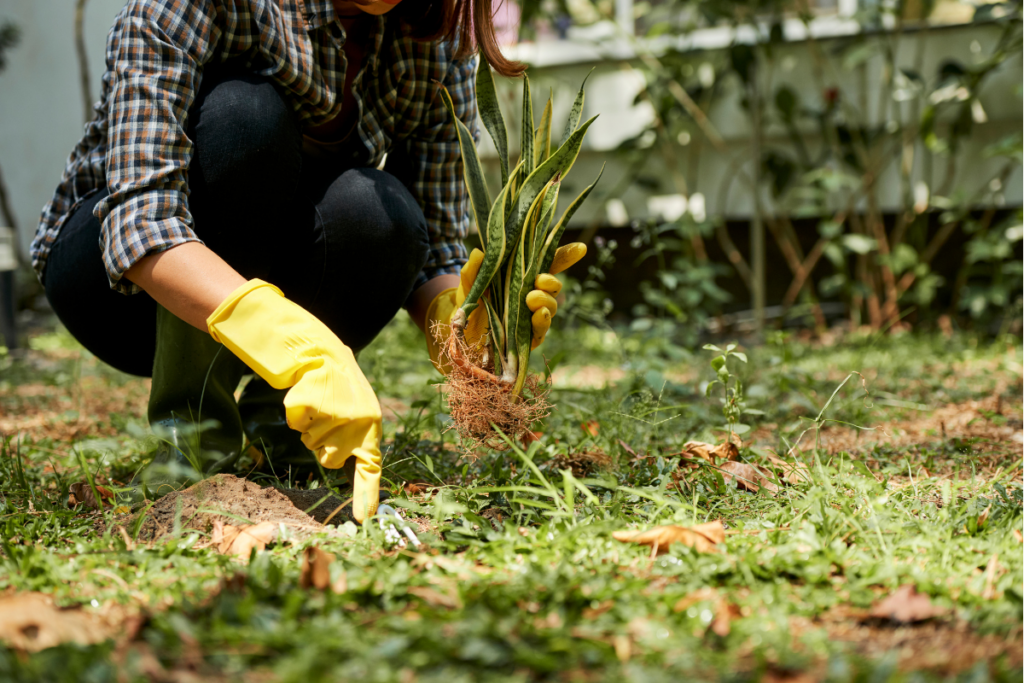
1. Take the plant out of the pot.
Around the area, spread out a newspaper or a tarp. Next, gently grip the snake plant’s leaves with one hand while removing the pot with the other. If you can, squeeze the pot’s base to remove it. Use a utility knife to cut around the dirt and remove it if the pot is glued to the ground.
The perimeter of the soil can also be marked with a pencil or chopstick, which is a much safer alternative because it can help you avoid injuring the roots.
2. Cut The Plant Pups
Shake off any loose soil after removing the plant from the pot, then separate the leaves to create three or four pieces. When you do this, you should notice the tiny pups on the plant’s base; each of them has a white rhizome. Using a clean pair of gardening shears or a paring knife, cut the little pups off the underside of the leaves.
3. Get The New Pots Ready
The next step is to prepare your new pots by filling them with cactus or snake plant soil, leaving a few inches at the top. Put your divided snake plants in these pots and cover them with a layer of dirt that is approximately an inch thick. On the plant bases, carefully press the earth down.
4. Give Water To Plants
Place the plants in an area with low to medium illumination or about four feet away from a north-facing window after softly watering them to mildly moisten the soil. The plants should receive some sunlight as they heal, but not too much that it stresses them.
What To Avoid When Growing Outdoor Snake Plants?
Misting During Hot Days
Your snake plant’s leaves don’t require misting. Even on the driest days, the plant may stay adequately hydrated thanks to the water in the leaves. However, plants that have been misted may experience fungal problems with their foliage.
The snake plant’s leaves shouldn’t be damp at all. Remember that these are tropical plants that thrive in locations with severe droughts, so they aren’t really lacking in water. Place the water in the plant’s soil, not on the foliage, if you notice signs of underwatering.
Freezing Temperatures
Avoid trying to cultivate a snake plant outside if you live in a cold climate without a plan for keeping it warm.
For example, if you want to grow a snake plant outdoors but live in a region where winter temperatures can drop below 50 degrees Fahrenheit, you might want to think about storing the plant in a small greenhouse.
Neglecting Pests
Although snake plants are generally pest-resistant, when they are exposed to an outdoor setting, this can alter.
For example, if you place your snake plant close to other plants that are infested with pests, there is a good risk that your snake plant will also get infested. To stop insect infestations from taking over your plant, be sure to catch them early and get rid of them completely.
RELATED: Snake Plant Roots: What To Look For In A Healthy Sansevieria Plant
What To Do To Snake Plants During Winter Season
If the wintertime lows are expected to be below 55 degrees Fahrenheit, you must bring your snake plants indoors. It’s best to place them in pots and bring them inside because there is no chance they can survive that.
Since this procedure is necessary (unless you live in a hot climate), many gardeners keep their snake plants in sizable pots that they simply bring indoors during the winter. Keep them close to a window indoors, but not right next to it. Of course, it would be ideal if the room had a high humidity level and a moderate temperature.
These plants prefer bright light (that is indirect) and will begin to wilt if kept in the dark, therefore, they don’t want you to keep them there.
Furthermore, it’s crucial to understand that watering your snake plant doesn’t change simply because you brought it indoors; water it no more frequently than every six weeks.
The summer is significantly better for snake plants than the winter. Simply place them in a slightly shaded spot during the summer and let them rest. But if you don’t bring these plants inside for the winter, they frequently die.
Can Snake Plants Be Under Direct Sunlight?
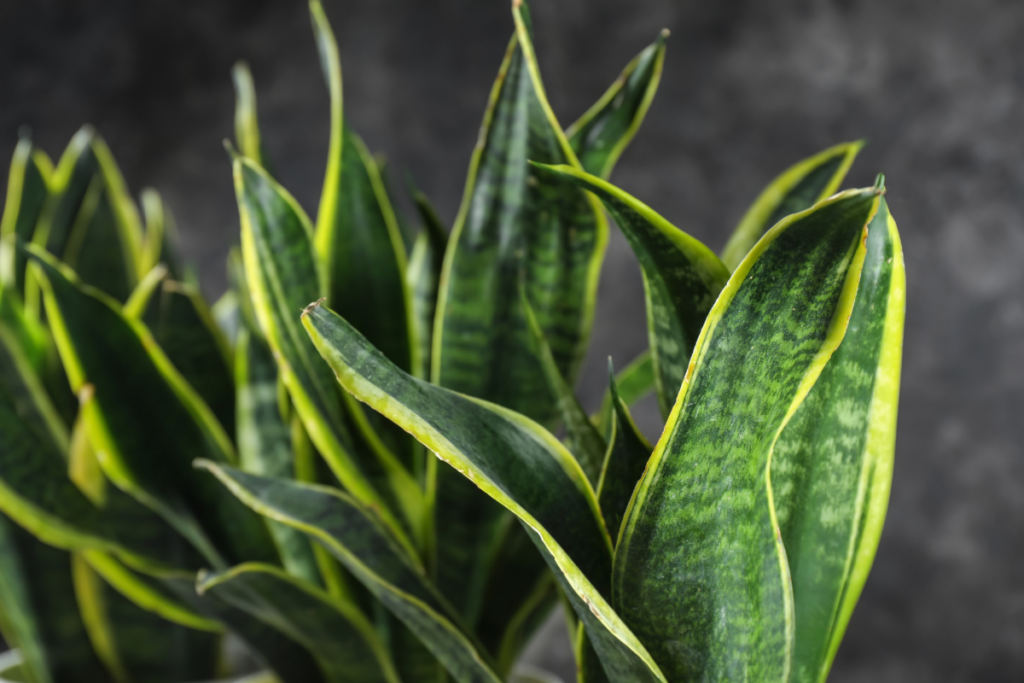
When growing outside, it’s better to keep snake plants away from direct sunlight because it can burn their leaves. Snake plants do, however, thrive in strong light but not direct.
Know more about caring for Snake Plants in direct light condition.
What Temperature Can A Snake Plant Handle?
Snake plants shouldn’t, at the very least, be subjected to low temperatures of less than 50 degrees Fahrenheit, especially for longer than a few days.
However, they can resist temperatures as high as 90 degrees Fahrenheit with ease. Anything higher could harm the plant’s leaves.
How Can A Snake Plant Grow More Quickly?
Snake plants are renowned for growing the fastest among indoor plants. Depending on the type of plant, they typically grow anywhere from four to twelve inches per year. Increase the amount of sunlight your snake plant receives each day to help it develop more quickly.
Your snake plant can develop more energy through photosynthesis and grow its leaves more quickly the more sunlight it receives. Therefore, give your snake plant as much sunlight as possible during the day. Additionally, if your plant is outdoors, you might want to keep an eye on the temperature on cooler days.
Try putting your snake plant near a window that gets a lot of natural light throughout the day, or outside in a location where it can get a lot of illumination throughout the day, if it is developing slowly.
Repotting your snake plant is another approach to encourage development. Although snake plant roots prefer a packed environment, they can still be successful in an uncrowded environment. Try to swap out the pot as your snake plant becomes taller so that it has more room for root development.
This implies that there may be up to a couple of inches of additional space between the plant’s ball and the pot’s base. Your snake plant’s leaves will get bigger the deeper the roots go.
RELATED: Watering Snake Plants: How Often To Water and More Helpful Tips
What Size Can Snake Plants Reach?
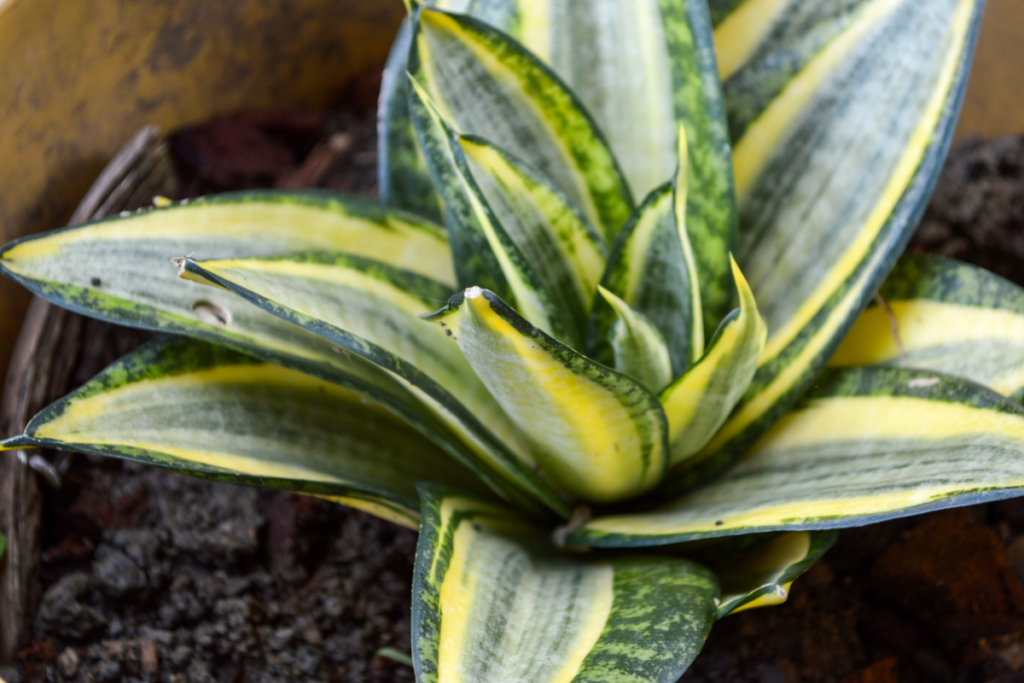
Perennial snake plants, sometimes known as Sansevieria, can reach heights of eight to fifteen feet. When exposed to more light, they typically grow taller outside. One to two feet long, their sword-like leaves can grow.
Final Thoughts
Snake plants are among the simplest plants to take care of and can be grown outdoors. However, it’s important to remember that the best temperature range for a snake plant while growing it outside is often between 55 and 90 degrees Fahrenheit.
Last but not least, bear in mind that while snake plants love the outdoors, you should avoid overwatering them by watering them more frequently than once every six weeks. Additionally, it is important to move plants indoors because they virtually never survive the winter.
Frequently Asked Questions (FAQs)
Can An Outdoor Snake Plant Survive The Winter?
Only in winter months, when temperatures don’t fall below 55 degrees Fahrenheit, can a snake plant live outdoors. Therefore, it is recommended to pot your snake plant and bring it inside for the winter since if they don’t, it will die in a matter of days.
How Should A Snake Plant Be Cared For Outside?
Temperature, lighting, and watering are three crucial variables. Keep it away from areas that are too bright and from areas that are too shaded. Once temps fall below 55 degrees, bring it indoors and water it once every six weeks.
Is An Indoor Snake Plant Preferable Than An Outdoor One?
Although snake plants can withstand either type of climate, it is preferable to keep them within during the colder months and only move them outside once the weather warms up. Warm temperatures are ideal for them.
Can Snake Plants Survive The Summer Time Outdoors?
Absolutely! Snake plants enjoy being outside, but be careful not to overexpose them to the sun. If you don’t, the leaves will begin to dry out and the scene won’t be as appealing.
Editor’s Recommendations
Hello, Why Is It Yellow? 5 Reasons Why Your Sansevireia Is Changing Color
21 Types of Sansevieria – Indestructible, Exotic, and Elegant Air Purifiers
Snake Plant (Sansevieria): How To Get Your Plant To Flower and More







